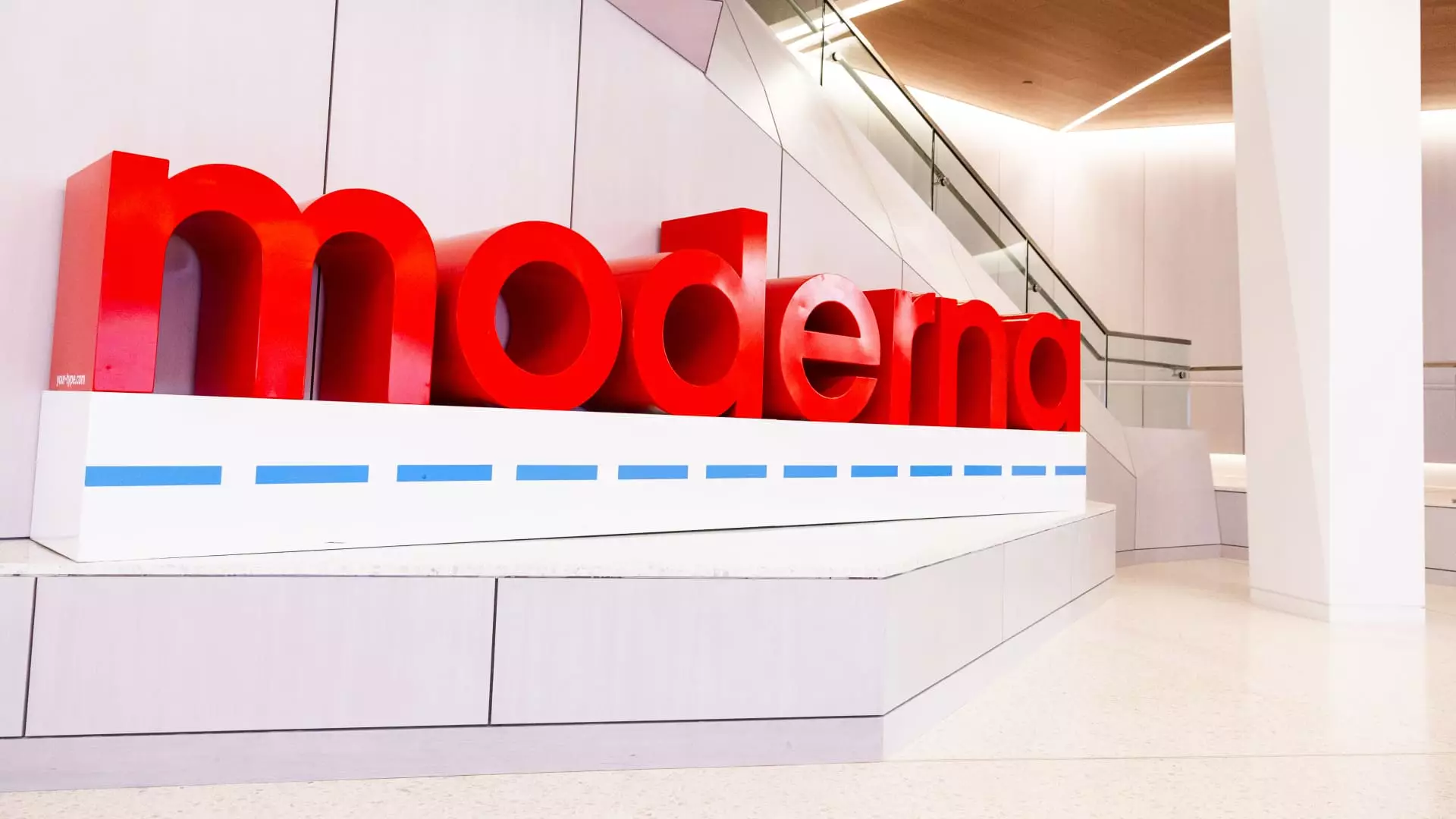As Moderna grapples with the waning demand for its COVID-19 vaccine, the biotech giant finds itself in a phase of transformation and recalibration for future growth. The company’s recent fourth-quarter financial results convey this transitional landscape, marked by a significant net loss despite beating revenue expectations. This article delves into the implications of these results, examining Moderna’s strategic adjustments, financial hurdles, and prospective future in the biotechnology field.
In its report for the fourth quarter of 2024, Moderna posted a revenue of $966 million, exceeding the anticipated figure of $942.8 million. However, the company also recorded a staggering net loss of $1.12 billion, translating to $2.91 per share. This contrasts sharply with the previous year, when it reported a net income of $217 million, or 55 cents per share, for the same period. The juxtaposition of declining profitability against rising revenue illustrates a company under stress, as it navigates a challenging post-COVID landscape. Furthermore, the loss was partly attributed to a substantial non-cash charge of about $238 million related to ending a contract manufacturing agreement.
Moderna’s CFO, Jamey Mock, indicated a significant reduction in costs of 27% from 2023, highlighting the firm’s commitment to tightening its financial belt. The company aims for a cumulative cost reduction of $1 billion by the end of 2025, a necessity as the revenue streams associated with its COVID vaccine diminish significantly.
Demand Decline and Strategic Shifts
The waning demand for COVID-19 vaccines is underpinned by a variety of market factors, including increased competition and stagnant vaccination rates. Analysts noted that the COVID vaccine sales in the fourth quarter approximately halved compared to the previous year, dropping to $923 million. This figure comprised $244 million from U.S. sales and $679 million internationally. Such a decline not only highlights the challenges faced by Moderna but also raises concerns about the efficacy of its current market strategies regarding COVID-19 products.
The diminished sales can also be traced back to inventory management decisions made last year, where Moderna opted to launch its newest vaccine iteration earlier than anticipated. The accelerated timeline for FDA approval allowed for more effective demand matching but ultimately led to reduced fourth-quarter sales. As the company phases out advance purchase agreements with several countries, its international sales prospects remain uncertain, necessitating a robust strategy to enhance product uptake in a competitive market.
In response to these challenges, Moderna’s future pivots toward diversifying its product pipeline. The company is banking on its messenger RNA technology to support ten new product approvals in the coming three years. Among these aspirations are several vaccines, including a next-generation COVID-19 shot, a combination vaccine targeting COVID-19 and influenza, and an RSV vaccine for high-risk adult populations.
Moderna’s past successes in vaccine development promote confidence, but the decisive question lies in whether it can translate that success into new therapeutics. Significant decisions from regulatory bodies are on the horizon, with the FDA expected to evaluate the next-generation COVID-19 vaccine and potential extended approvals for the RSV shot soon. The timing of these evaluations will be critical for Moderna as it attempts to regain footing in the market.
Despite facing a multitude of obstacles, including fluctuations in material costs and a competitive landscape, Moderna has demonstrated resilience through strategic cost management. The company managed to reduce its cost of sales by 20% and cut research and development expenses similarly. However, these measures were not sufficient to stem financial losses, indicating that merely cutting costs might not be enough to address daunting revenue challenges.
Analysts and investors alike are now watching to see if Moderna can effectively address these obstacles without compromising its long-term growth potential. The company’s guidance for future product sales stands between $1.5 billion and $2.5 billion for 2025, significantly down from previous forecasts and a clear reflection of the market-consuming respiratory product limitations during the offseason.
Moderna’s latest financial results starkly outline the shifting terrain the company must navigate as it emerges from the COVID-19 era. While the net loss and reduction in sales figures illuminate the challenges ahead, the ongoing efforts to reduce costs and develop new products reveal a commitment to resilience. For Moderna to thrive in this new landscape, it must accelerate its diversification strategy, effectively manage its financial outlook, and craft a narrative that instills confidence in its stakeholders while addressing the ever-evolving demands of public health.

